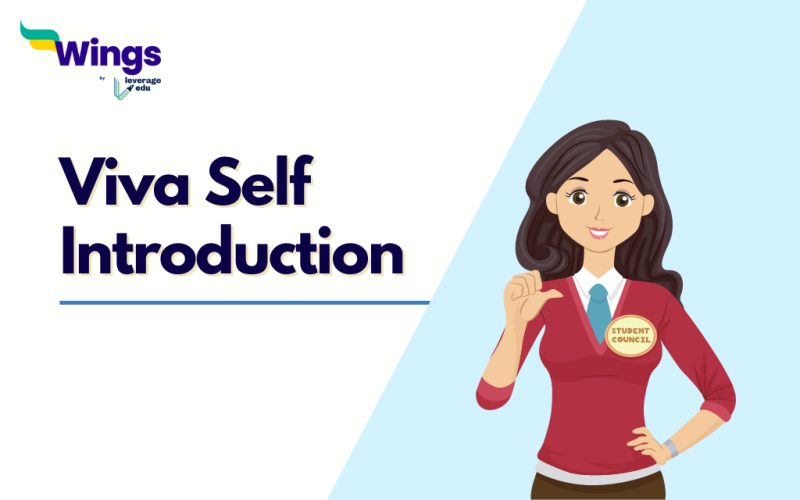As students, we often wonder how to go about viva self introduction. A viva is basically a university examination in which students respond to questions, which are typically centred on a certain topic or subject. Even the most confident students go blank even before introducing themselves, resulting in a failed viva exam. Some examiners conduct vivas in order to disqualify as many pupils as possible, turning it into a source of anxiety and a difficult barrier.
A good self-introduction is important to create a positive impression. It helps the panellists to get an idea of who they are interacting with, what they do, and what are their interest areas before they engage with the viva questions. Keep reading to discover some useful tips on introducing yourself for a viva.
This Blog Includes:
Top Viva Self Introduction Tips and Tricks
While viva is considered one of the most frightening portions of the entire examination by the students, given below are some tips that will help you start, perform better and answer the examiner’s questions more confidently:
1. Don’t Let Your Introduction Fall Flat

If your viva self introduction falls flat, the panellists will not be so impressed by you. Don’t make them question whether you’re their ideal person to talk to. Plan your introduction ahead of time and fascinate them with a glimpse inside your world.
2. Be the True You

Being remembered may not seem vital at the outset of a viva, however, if you want one piece of information/message/theme to stick with you throughout the conversation, say it in your opening viva self introduction. This is who I am, and this is what I value.
Must Read: How To Ace Your Self Introduction in Interview!
3. Content is Key

The type of your audience should be considered when crafting your viva self introduction. If you’re at a placement viva, try to figure out the corporate values and tailor your phrases and tales accordingly.
4. Body Language

Maintain positive body language and eye contact during the conversation to make the viva engaging. Dress properly and professionally. With a confident grin, greet him and ask if you may take the seat. Show respect and a positive attitude towards the panellists.
Also Read: Self-Introduction for Students
5. Don’t Panic

Listen closely to the questions and respond cautiously and gently without rushing. Stressing during an examination is inevitable, but regardless of what you’ve done, maintain a positive attitude to reduce nervousness before and during the viva. Anxiety and fear during an examination will make you look underconfident and unprepared.
Also Read: How to Give a Self Introduction in Viva Exam?
6. Be Clear and Don’t Fumble

When you answer loud and bold, examiners are frequently frustrated by unclear, difficult-to-hear tones. They get irritated to say, “I’m sorry, I didn’t get you.” Be clear and audible.
7. Refer to Your Projects

Unlike a written exam, a viva is a distinct assessment. After you are done with viva self introduction, prepare for viva-style questions instead of descriptive responses. Prepare for at least a couple of chapters because examiners will most likely give you a choice of topics to begin the viva with. Consult your seniors to find out what areas the examiners are interested in and which books to read. Your viva will almost certainly begin with the practicals or projects that you finished. Go through your projects thoroughly.
📌Also Read:

FAQs
Sensitive Personal information like marriage history, infants, politics or religious affiliations, and so on must be excluded in a Viva introduction.
Among all of your experiences, there must be a handful that will impress the panellist. You must pick something that will pick their interest and make them want to know more about you. Pick experiences that will make you stand out.
Nervousness is normal, try to be calm. Collect your information and create an impressive viva self introduction. At last, just go with the flow.
If you wish to get the best career advice then visit our career counselling page.
 One app for all your study abroad needs
One app for all your study abroad needs














 45,000+ students realised their study abroad dream with us. Take the first step today.
45,000+ students realised their study abroad dream with us. Take the first step today.

